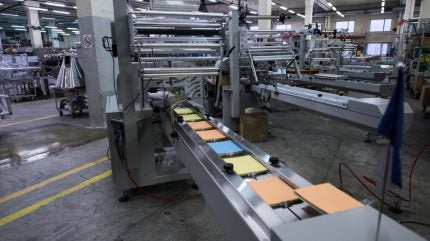
The packaging industry is undergoing a transformative shift driven by advancements in testing technologies.
Rodger Segelstrom, the Global Product Line Director at Industrial Physics, shared insights from recent research highlighting the most exciting testing developments currently shaping the sector.
As packaging professionals focus on enhancing quality and sustainability, several key trends have emerged.
Automation takes centre stage
Segelstrom’s latest report reveals that automatic process control is leading the charge among testing innovations.
“In our latest piece of research with packaging professionals in food and beverage, half agreed that their company has made positive changes to the packaging testing environment in the past five years,” he noted.
This development reflects a growing trend within the industry, with many companies embracing automation to improve efficiency.
How well do you really know your competitors?
Access the most comprehensive Company Profiles on the market, powered by GlobalData. Save hours of research. Gain competitive edge.

Thank you!
Your download email will arrive shortly
Not ready to buy yet? Download a free sample
We are confident about the unique quality of our Company Profiles. However, we want you to make the most beneficial decision for your business, so we offer a free sample that you can download by submitting the below form
By GlobalDataHe emphasised the significance of real-time information sharing: “The excitement for this development is centred around the ability to share information in real time through continuous feedback loops, which facilitates error correction and significant reductions in waste and inefficiency.”
With waste reduction being a high priority, companies are motivated to implement automated solutions for both cost-effectiveness and sustainability.
“Waste reduction is a high priority for all companies in these industries, primarily for cost effectiveness, but also because it can support a company’s sustainability credentials.”
The shift towards non-destructive testing
Another trend highlighted by Segelstrom is the rise of non-destructive testing methods. This approach enables companies to maintain product integrity while conducting quality checks.
“The method eliminates the destruction of packaging without compromising on the ability to test and ensure the safety and quality of the product,” he explained.
By minimising waste and reducing human intervention in testing, these methods enhance operational efficiency.
Moreover, RSegelstrom mentioned how this innovation could be instrumental in alleviating the burden of traditional testing processes: “It also removed the human intervention required to pick products from the line and take them to the lab for testing.”
The ability to maintain quality while saving resources is a game-changer for many packaging companies.
Commitment to 100% inspection
The report also points to a growing commitment to 100% inspection of packaged products. “This really represents the gold standard for packaging companies because it ensures quality and safety for everything produced,” RSegelstrom stated.
Although achieving full inspection remains a work in progress, the trend is towards higher quality assurance. “At the moment, we are seeing incremental increases across industries rather than an immediate jump to 100% inspection.”
Implementing rigorous inspection methods not only boosts product safety but also enhances consumer trust. Companies are increasingly aware that robust testing regimes are vital to ensuring that faulty or damaged products do not reach customers.
Looking forward: challenges and opportunities
Despite the excitement surrounding these developments, Segelstrom acknowledged the challenges companies face in implementing new testing methods.
“The ability to consistently meet customer demand with high quality, safe packaging will always take precedent,” he explained. This focus can make it challenging to introduce innovative solutions, particularly if they disrupt existing processes.
Segelstrom advised companies to look beyond immediate production impacts and consider the broader benefits of testing innovations, such as waste reduction.
He suggested leveraging industry events to learn from peers about the advantages of new testing developments: “Attending industry events and getting to learn the overarching details about how a process works and therefore how it facilitates the advantages, is a great way to access that knowledge.”
In-house testing expertise also plays a crucial role in navigating these challenges. “In-house testing expertise helps companies to keep on top of the latest developments and proactively spot opportunities for change and improvement,” Segelstrom noted.
By fostering a deeper understanding of testing technologies, companies can ensure they are maximising quality and safety standards.
As the industry moves towards more stringent standards, Segelstrom highlighted the need for companies to stay abreast of developments.
“Interestingly, we often see companies who have set standards that go above and beyond the set industry level. This is done for a variety of reasons, mostly commonly to achieve a competitive advantage.”
The interplay between innovation and regulatory compliance will continue to shape the testing landscape.
The takeaway
Ultimately, the packaging industry is witnessing significant advancements in testing technologies, with automatic process control, non-destructive testing, and 100% inspection leading the way.
While challenges remain, companies that embrace these trends stand to gain competitive advantages through improved efficiency, quality, and sustainability.
As Segelstrom stated, “Years ago, paper would be made, and a sample of the roll would be taken to the lab for testing, then it would be sent back to the machine tenders to make changes.”
Today, real-time measurements and feedback are enabling companies to enhance their processes like never before, promising a brighter future for packaging testing.



